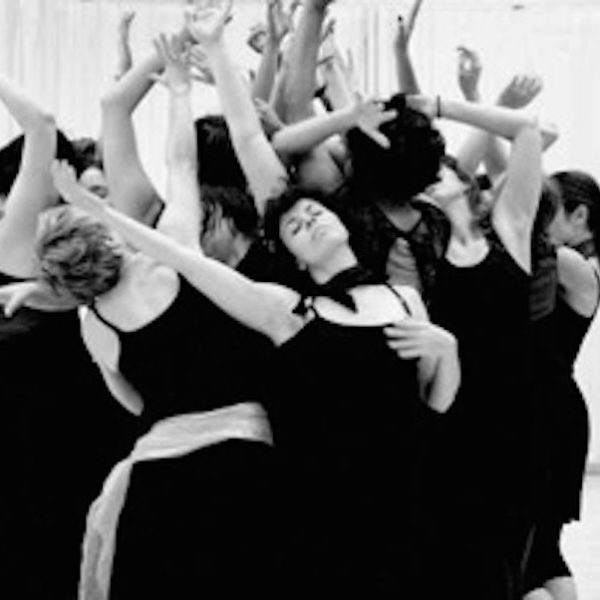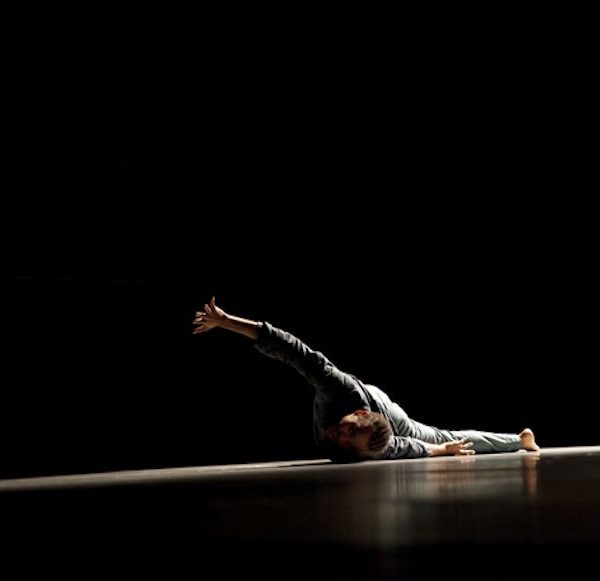
Interview with Hagit Yakira and Sophie Arstall
採訪海吉特·雅琪拉和蘇菲·阿斯多爾
.
Award-Winning Israeli choreographer Hagit Yakira founded Hagit Yakira Dance Company in 2007 and has since gone on to tour the UK, Europe, Scandinavia and Israel. So far she has created seven works for her company amongst many other commissioned works for other companies and students. Hagit Yakira Dance Company creates work whereby storytelling, intimacy, dance and text are uniquely interwoven into an individual interpretation of inter human relationships and emotions through dance theatre and performance.
屢獲殊榮的以色列編舞海吉特·雅琪拉在2007年創辦了海吉特·雅琪拉舞團(Hagit Yakira Dance Company),至今已多次於英國、歐洲、斯堪地那維亞地區和以色列巡迴演出。海吉特為自己的舞團創作了七部作品,同時許多其他舞團也委託她來創作。海吉特·雅琪拉舞團的作品把故事、舞蹈和文本融合在一起,再通過舞劇來表達她對人與人之間關係和情感的獨特詮釋。
.
ART.ZIP: Would you please give us a brief introduction of yourself?
HY: I’m Jewish, originally from Israel, and I’ve been living and working here in London for 10 years. I came here to study dance, doing an MA in European Theatre Dance at the Trinity Laban Centre. This is where I met Sophie, she’s a dancer and she danced in one of my first choreographic work. In 2007 I formed Hagit Yakira Dance Company, realising I want to work mostly as a choreographer. These days I am mostly choreographing and teaching all around the UK, Europe, Israel and Scandinavia, and I am performing less. I’m also doing a PhD in Choreography at the moment at Trinity-Laban.
When I teach within institutions, there are specific things I’m needed to teach – but what I do in my workshops results in much more freedom in deciding what I want to teach. People who are participating open workshops are normally also freer in terms of what they can do. They don’t have to feel purpose-driven, they can just come to experiment. And it is this freedom of exploration that I really enjoy teaching.
ART.ZIP: 您能給我們簡單介紹一下你自己嗎?
HY: 我是來自以色列的猶太人。我來倫敦已經10年了,我起初是來學習舞蹈的,在三一拉班藝術學院(Trinity Laban Centre)修讀歐洲戲劇舞蹈碩士學位。就在那我認識了舞者蘇菲,她為我最初編導的舞劇表演。2007年我創立了海吉特·雅琪拉舞團,因為我發現自己內心最想做的還是編舞。現在我表演的不多,更多的是進行編舞和教學工作,主要在英國、歐洲、以色列和斯堪地那維亞地區。現在我還在三一拉班藝術學院修讀博士學位。
我在院校教學的時候需要教很多特定的內容,在工作坊我則有更多自由度來決定教什麼。參加開放工作坊的人也通常更靈活,他們目的性沒有那麼強,所以就能自由地來參與和體驗舞蹈。我十分享受這種教學實踐裡的自由探索。
.
ART.ZIP: What do you think of dance education in the UK?
HY: I didn’t study my BA here, and also not my first MA. I came here to do my second MA. The reason I wanted to study somewhere else, and not only in Israel is because I wanted to have different perspective on dance, on dance education and choreography. The UK is very different to Israel in all terms, there isn’t a better way or worth, but just different. I also realised that I had to really decide why is it that I study dance so deeply, is it dance for dance’s sake, for amusement’s sake, or it could be for technique’s sake – much more physical, or for more critical reasons, creative, experimental. But all of those studies help and direct oneself to look at the body and the physical in many possible ways.
SA: I studied here a BA and an MA. Some courses here train you as an athlete, so you have to be really fit and very disciplined. Maybe it is a bit less creative, and you are trained to be a dancer for someone else – in a company, for example. That’s the aspiration. I think every school is different, and has a different emphasis. In the UK, what’s great is that there are many options with a huge sector of community dance. England has a massive tradition of community art.
HY: I think dance in the UK is in a very crucial point these days, a very interesting period for dance, for many reasons. The sad thing about dance in the UK is that it is a less viewed art form; people will do it, but they won’t go and watch it. In addition due to the recession people invest less money in dance, this challenge us- the dance artists- to ‘seduce’ people into our world. I find it a very critical time for dance. We don’t know where this art form is going, where the possibilities are or how we need to re-educate our dancers to be able to communicate different things in different ways. As Sophie said, there are some schools with an emphasis on creativity, and other schools with more of an engagement with intellectual, philosophical perspectives. This is very much what I find interesting and also an important linking point to some places in Europe, which ensure that art and philosophy and the academia are all coming together – which I find really amazing, because this opens up possibilities. You can focus on becoming a dancer, which is very technical, and/or you can decide to focus on creativity and engage with dance in different ways.
SA: In terms of people coming for courses, say university courses, it’s a more academic and less vocational thing, it’s about training the body. In Surrey and Middlesex, Brighton, Northampton – these all do good courses; a lot of people go there and you are trained to be an all-round dance artist. You learn to teach. You learn to make and to create – for special communities, film, sound and lighting. It’s very complete, though maybe it’s less being a dancer, there’s lots of that. And you also have 3 to 4 vocational schools to choose from, such as Trinity Laban or London Contemporary Dance School in London and The Northern Contemporary Dance School in Leeds. They’ll retrain you to be a dancer, and maybe choreographer as well.
HY: I think those are the main ones, Trinity Laban Conservatoire of Music and Dance, The Place in London, and then the Northern School of Contemporary Dance in Leeds.
SA: Even between these schools, it depends on who is leading the programme. Some have very straight disciplines; less theatrical, and possibly even less creative training.
ART.ZIP: 您覺得英國的舞蹈教育怎麼樣?
HY: 我的本科和第一個碩士學位都不是在英國讀的,我來英國修的是我第二個碩士學位。我到以色列以外的地方學習的原因是我希望能對舞蹈、舞蹈教育和編舞有不一樣的理解。英國在各個方面和以色列都很不一樣,不是說哪個更好,只是不大相同。我知道我必須作出選擇,到底為甚麼我要這麼深入地學習舞蹈,是只為了舞蹈本身呢,還是為了開心呢,或者是為了肢體上的某種技能,還是為了更批判地探索舞蹈及其創新性和實驗性。但這些所有的學習都能幫助和引導一個人來看待身體和肢體的可能性。
SA: 我在這裡修讀本科和碩士。這裡的課程有些會像訓練運動員一樣訓練你,所以你要非常健美並經受嚴格訓練。或許這樣會使人缺少創造力,因為你會被訓練成為別人的舞者,譬如說為某個特定的舞團服務。我認為每個學校都是不一樣的,他們都有自己的側重點。在英國的好處就是有多種多樣的選擇,而且還有很豐富的社區舞蹈。不得不說英格蘭有很龐大的社區藝術傳統。
HY: 我認為舞蹈在當今英國是很重要的,它也正處在一個很有趣的時期,這包含很多種原因。令人傷感的是舞蹈在英國是較少被觀賞的藝術形式,人們都樂於參與,卻很少去看。另外,因為經濟不景氣,人們投資在舞蹈上的資金就更少了,這對我們來說是個很大的挑戰。作為舞蹈藝術家,我們需要“誘惑”更多人來舞蹈世界。我覺得現在是一個關鍵性的時刻,我們不知道這種藝術形式會向哪個方向發展,可能性在哪,我們如何重新教育舞者來用不一樣的方式進行新的交流。就像蘇菲所說,有些院校會著重于創新性,而其他學校則會側重于思維和哲學層面的探索。這是我覺得英國有意思的方面,也是連接歐洲各地重要的一環。我認為藝術和哲學、學術結合在一起是非常棒的,因為這樣意味著更多的可能性和開放性。你可以專注于成為一名舞藝超群的舞者,或者你又可以選擇專注於創新,用不一樣的方式來舞蹈。
SA: 大學舞蹈課程更多是學術的研究,職業性沒那麼強。在薩里、米德爾塞克斯、布賴頓和北安普頓,他們都有很好的舞蹈課程,很多人在那兒接受訓練并成為全方位的舞蹈藝術家。你會學習如何教學,如何進行編舞和創作,如何為特定的社區、電影、聲音和燈光進行創作等。這種舞蹈教育都比較全面,或許說不是教育你如果成為舞者,因為學習的內容比成為舞者要求的更多。你還可以選擇職業性較強的學校,有三、四家,例如三一拉班藝術學院、倫敦當代舞蹈學院、還有在利茲的北方當代舞蹈學院,他們會把你培養成舞者和編舞。
HY: 倫敦的三一拉班藝術學院、The Place舞蹈中心、利茲的北方當代舞蹈學院都是比較重要的院校。
SA: 這些學校的教育發展方向很大程度是看誰在指導。有些會比較教條,不那麼注重戲劇性的表演,有時候還可能少一些創意培訓。
ART.ZIP: What is your approach to teaching?
HY: Choreographing autobiography is my PhD research topic. I was also trained as a dance movement therapist many years ago, alongside forming a career as a dancer and creator. I feel that in order for dance students to be able to reach their potential, with the way we are living in the West, people want to express themselves to their maximum. However, I felt that I needed to find different ways to teach people how to use their bodies, and how to express themselves, really their own individual voice. I trained with quite strict techniques as well as trained as a Graham teacher – which is very specific modern dance technique. I realised that when I teach very strict techniques, I basically eliminated the possibilities of my students. They have to learn a language, which might not fit their bodies. Their bodies can do amazing things, however this technique might not enable them to know that. So I wanted to find a way that I can tag each student, or group of students, and give them information, to then let them explore by themselves, of course with a flavour of techniques. This way they can understand their body, and movement and understand their basic aim, the relationship with the floor, the space, the gravity – they explore by themselves, so I don’t need to give them all the answers. I think this benefits them very much, even for professional dancers that I train in this very specific way, because it gives them the responsibility to re-learn. For people who’ve never danced before, or people who are just starting to dance, it gives them the freedom to explore without the fear of doing something right or wrong.
SA: What is great about Hagit’s approach is that improvisation become accessible to everybody, either beginner dancer or professional. Because it’s up to you, you have to be more poetic in the class – it’s about experiencing what you want to achieve and how to challenge yourself. It’s being offered something, and not having something imposed on you, and somehow I think that allows everybody to maximise their potential. Schools in England are starting to realise how important this technique is, alongside Cunningham and Graham and other stylised techniques; it’s free of approach, which requires, I think, more creative and mental input from both the teacher and the students than just learning a language.
HY: You have to constantly challenge yourself, you have to constantly want to achieve something. If you want to improve, it’s your responsibility. I find it very important. Especially in the western world, it doesn’t allow you to be lazy when processing material. I also think that many people have fears of dancing. There are a lot of people who are afraid to go to dance classes because they feel they can’t dance. Or a lot of dancers who are so over-trained, they are afraid to do other techniques, it’s like they lost their own voice. I believe in challenging the dancers in a nice way, positive, I am still being very physical and challenging but in a fun way – where people can try and fail and try again. I don’t believe so much in being right or wrong. And I also don’t believe in failing.
SA: I think Hagit’s method could be related to her training in dance therapy, I think this is hugely important in understanding the psychology of a group or an individual. They are not just the bodies, they are not just one of 30 people training. Everybody is different, you need to understand how people work and behave, how to bring the best out of people. I wish more teachers would direct and train in that way, because when you are working with your body, it’s so important to understand psychology as well.
ART.ZIP: 您能介紹一下您的教學方法嗎?
HY: 自傳式編舞是我的博士研究課題。在很多年前我受訓成為一名舞蹈治療師,同時也是舞者和編舞。我認為要讓學生能夠更好地發揮他們的潛能,要聯繫他們自身的生活,在西方,人們都渴望表達自己。但我覺得我需要做的是尋找不同的方式來引導人們,讓他們運用自己的肢體作為自己獨立的聲音來表達自己。我受訓的時候是運用非常嚴謹規範的舞蹈技巧來培訓成為格雷厄姆式的教師(Granham)。可是我發現教這麼特定的舞蹈技巧從根本上抹殺了很多學生的可能性。他們很可能學了一種並不適合他們自身的舞蹈語言。我們的身體可以做很多令人驚奇的事,但是這些特定的舞蹈技巧可能並不利於幫助學生了解這一點。所以我希望能夠做到因材施教,引導他們如何運用舞蹈技巧來進行自我探索和發展。這樣他們可以逐步了解自己的身體,肢體運動及其基本目的,他們與地面、空間和地心引力之間的關係,學生們可以自主地進行探索,我並不需要給他們全部的答案。我想這樣對他們很有好處,就算是對於專業舞者我也用這樣的方式,因為他們有責任進行自我學習。對於那些從來沒有舞蹈經驗的人,或者剛開始接觸舞蹈的人,這樣的教學可以讓他們更自由地去探索舞蹈,而不用害怕哪裡做錯了。
SA: 我認為海吉特的方式是很值得推薦的,即興表演對於每個人都是可行的,不論是初學者還是專業舞者。因為這完全是靠自己把握的過程,在課堂上你需要運用詩意的思維方式來進行探索,這是一個自我體驗和自我挑戰的過程。這是被給予的過程,而不是把什麼強加在身上,我覺得這樣可以讓每個人都能盡可能地發揮自身的潛能。英格蘭的院校現在開始意識到這種技巧的重要性,它和坎寧安、格雷厄姆等風格是同等重要的;我認為這種自由的方式對於教師和學生來說都需要更多創意和精神投入,而不僅僅是作為一種語言來學習。
HY: 你需要不斷挑戰自己,需要有渴望達到某種目的的欲望。如果你想要提高,你就必須這樣做。我認為這很重要,特別是在西方世界,在提煉學習的過程中不允許懶惰。我還發現人們對於舞蹈有一種恐懼。很多人害怕去舞蹈課的原因是他們覺得自己不會跳舞。還有很多舞者他們已經被過度訓練了,他們害怕嘗試其他舞蹈技巧,就好像害怕會丟掉自己的語言一樣。我相信用一個友好的、積極的方式來對待舞者會更有效,我還是會在舞蹈技巧上挑戰他們,但是用一種更有意思的方式,他們可以進行多種嘗試,一種不行就再嘗試另一種。我認為沒有什麼對的或錯的,我不認同失敗這一說法。
SA: 我覺得海吉特的教學方法和她早期的舞蹈治療訓練有關。我認為了解個人或群體的心理是至關重要的。他們不僅僅是肉體,他們不是三十人中其中一個人的訓練。每個人都是獨特的,你需要了解人們的行為舉止,如何把他們最好的一面帶動出來。我希望更多教師能注意到這點並運用這樣的方式引導學生,因為你是和自己的身體合作的,所以了解人的心理是很重要的。
.
ART.ZIP: What are Open Classes?
HY: Open Classes are classes where people can just join us, there are classes for professionals and for non dancers, and I like to teach both and sometimes in the same class as I believe it creates a great energy! During production time, when we are rehearsing for a choreographic work with my company I normally close the door so people can’t be a part as it’s very private; my creative process is very autobiographically, and personal, so I prefer there will be nobody observing – so the performers don’t feel so exposed. My research into autobiographical work contains a dialogue between art and dance and philosophy. It does challenge what autobiography means, what storytelling means, how we tell stories, and it challenges and recreates essences of community and connectivity, the space in between people. For me, a lot of philosophical questions are about body and about connection with audience; about empathy, about sympathy and identification. We are in a very narcissistic time, where everybody is willing to expose themselves, for instance for their five minutes of fame on the X-Factor, or everybody on Facebook telling their stories, it’s all about me me me me me…what does this mean? Psychologically it’s very interesting. How can we challenge it, rethink it, rework it and make choreographies about it. For me it’s really interesting.
ART.ZIP: 能介紹一下你們的公開課嗎?
HY: 公開課是鼓勵大家參與的舞蹈課程,有為專業舞者設置的也有非專業的,兩者我都喜歡教。有時候我會把他們安排在同一節課裡,因為我相信這樣能激發更多能量!在為舞團編舞和排練的時候,我會把門關上,因為那是很私人的;我的創作過程很注重個人,自傳式的,所以我會更願意在沒人觀看的時候進行,表演者也不會覺得太暴露。對於自傳式舞蹈研究,我覺得是一種包括藝術、舞蹈和哲學的對話。它挑戰的是自傳的含義,什麼是故事敘述,它挑戰並重新創造了社區及其關聯的本質、人與人的距離等等。對我來說,很多哲學問題是關於身體的,關於與他者聯繫的;關於共鳴、關於同感和身份認同的。我們處於一個非常自戀的時代,每一個人都願意將自己展示在公眾面前,例如在選秀節目上五分鐘的成名,或者在社交媒體上絮叨自己的事,所有一切都是圍繞“我”的,這說明什麼?從心理學來說這很值得探討,我們如何挑戰它、反思它、重新創造,用它來編舞等等,對我來說都是非常有趣的。
Find out more: www.hagityakira.com















